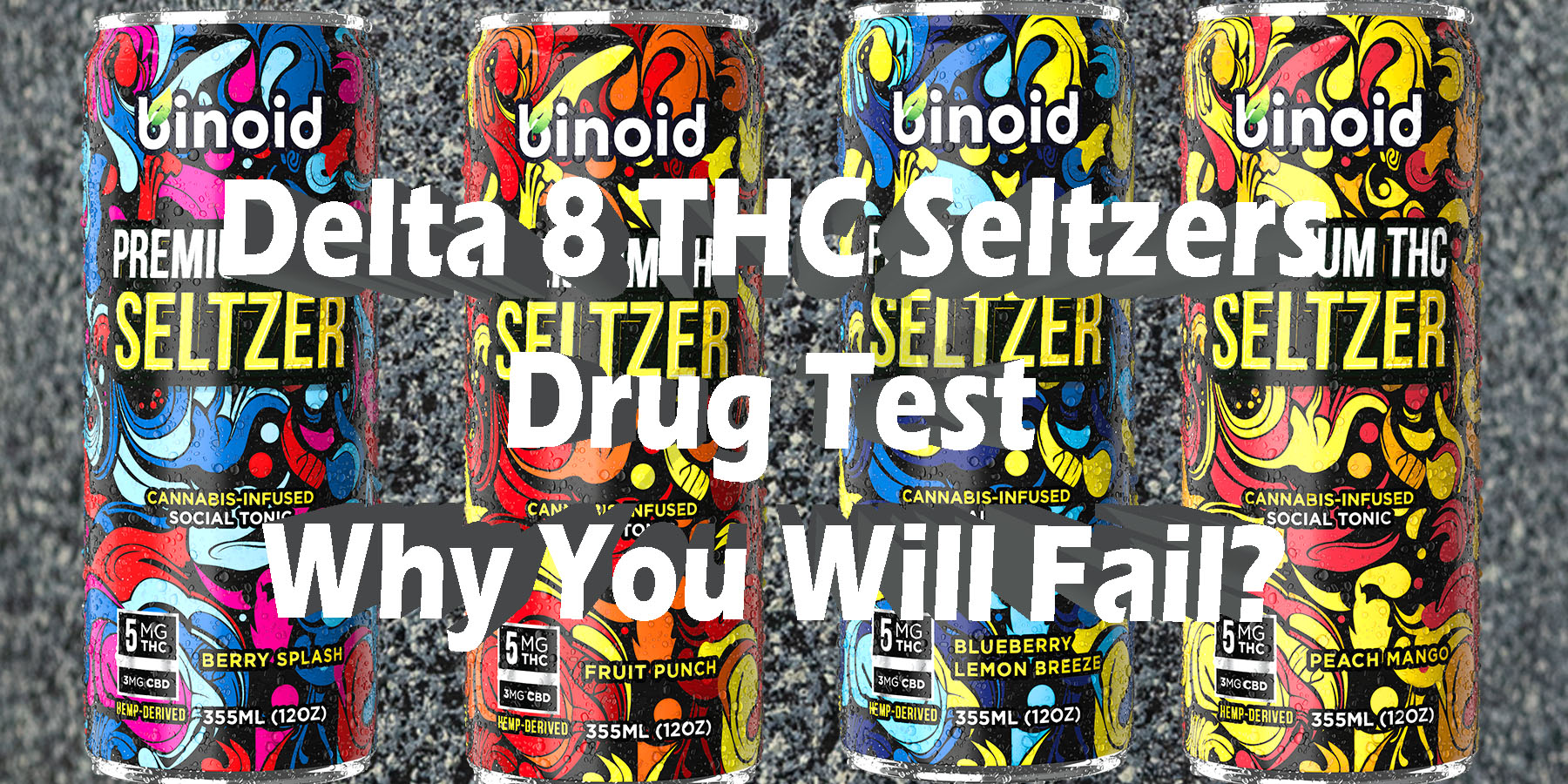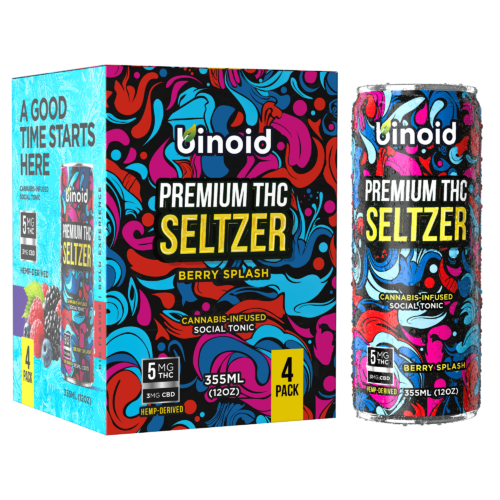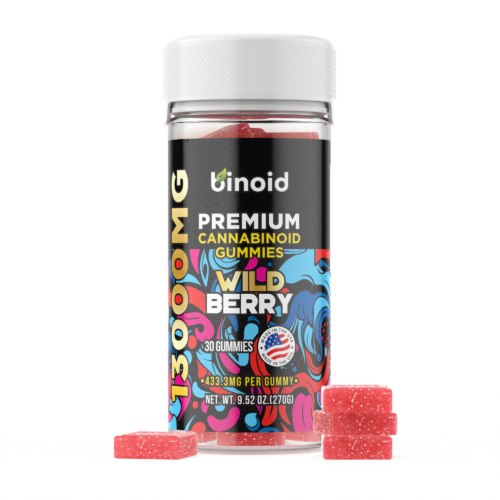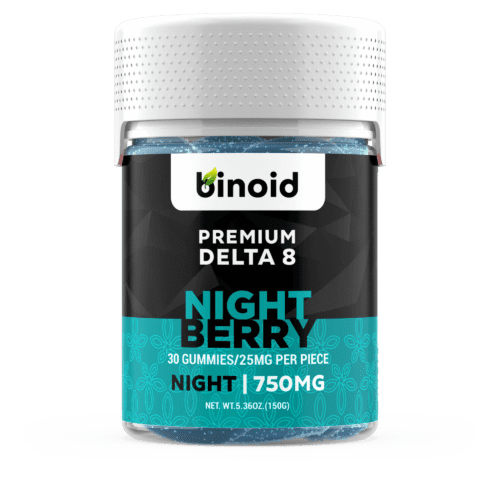The choice often presents itself with alluring simplicity. Standing before a brightly lit cooler, you see rows of sleek, elegant cans, each promising a crisp, refreshing path to relaxation. These are Delta 8 THC seltzers, the modern answer to unwinding without smoke and with the perceived safety of a government-approved label. It feels like a clean, sophisticated, and, above all, consequence-free decision. However, this moment of simple pleasure masks a profound and complex conflict—one that plays out not in a courtroom, but within your own body’s intricate systems.
The instant you take that first sip, you initiate a biological chain of events that is completely indifferent to the product’s legal status. The stark, unforgiving science behind metabolic processes and drug-screening technology creates a critical blind spot for the unwary consumer. This is where the story of a legal beverage collides with the reality of a potentially life-altering drug test, turning a casual choice into a high-stakes gamble where understanding the science is your only true defense.
To Buy Delta 8 THC Seltzers Click Here
Recommended products
What Exactly Are Delta 8 THC Seltzers Anyways?
A Delta 8 THC seltzer is, at its most basic level, a carbonated water beverage that has been infused with Delta-8-Tetrahydrocannabinol – a naturally occurring cannabinoid found in the cannabis plant. What makes Delta 8 so notable is its relationship to both hemp and its more famous chemical cousin, Delta 9 THC. While Delta 8 exists naturally, it is only present in trace amounts. Therefore, the Delta 8 used in commercial products is almost always created in a lab by chemically converting CBD, which is plentiful in legal hemp plants. This process has allowed manufacturers to produce Delta 8 on a large scale while operating under the permissions of the 2018 Farm Bill, which legalized hemp and its derivatives as long as they contain less than 0.3% Delta 9 THC.
The method of creating these drinks involves a key scientific step called emulsification. Since cannabinoids like Delta 8 are oils (hydrophobic), they do not naturally dissolve in water. To overcome this, producers use technology to break the Delta 8 oil down into microscopic droplets that can be evenly suspended throughout the seltzer. This process ensures that every sip contains a consistent amount of the active ingredient and also increases its bioavailability, allowing the body to absorb it more efficiently through the digestive system. This results in a product that is convenient, shelf-stable, and offers highly predictable dosing, which is a major part of its appeal over other forms of cannabis that can be difficult to measure.
The experience of drinking a Delta 8 seltzers is often described as a more manageable and “user-friendly” high compared to traditional Delta 9 THC. The effects are psychoactive, but they tend to be less intense, producing a state of relaxation, mental clarity, and mild euphoria without the anxiety or paranoia that can sometimes accompany higher potency Delta 9 products. Because it is ingested, the onset of effects is gradual, typically taking between 30 and 90 minutes to fully manifest. This slow, building effect provides users with a greater sense of control and allows them to ease into a comfortable state of mind, making it a popular choice for social settings, creative endeavors, or simply unwinding at the end of a long day without feeling overwhelmed.
The Core Question: Why Delta 8 THC Seltzers Could Trigger a Positive Test
Essentially, consuming Delta 8 THC seltzers can cause you to fail a drug test. The widespread confusion on this point stems from a failure to distinguish between a product’s legal classification and the unyielding science of drug test methodology. The legality of Delta 8 is a human-made rule; a drug test operates on the unchangeable rules of biochemistry. Whether you consume Delta 9 THC from marijuana or its isomer, Delta 8 THC, from a hemp-derived seltzer, your body breaks them down in a fundamentally similar way. The problem isn’t the Delta 8 you drink, but what your body turns it into long after the buzz has faded.
When Delta 8 THC enters your body, it is sent to the liver to be metabolized. This process converts the active compound into several byproducts, which are known as metabolites. The single most important of these from a drug testing standpoint is 11-nor-9-carboxy-THC, commonly abbreviated as THC-COOH. Standard drug screening panels, particularly the immunoassay urine tests used by the vast majority of employers, are not designed to detect the specific parent compound you consumed (Delta 8 or Delta 9). Instead, they are specifically calibrated to search for the presence of the THC-COOH metabolite. The reason is simple: THC-COOH is an undeniable marker of cannabis use that remains in the body for a much longer time than the original psychoactive compound.
The final piece of the puzzle is solubility. Unlike water-soluble substances like alcohol that the body flushes out quickly, THC and its metabolites are fat-soluble, or lipophilic. This means that after being created in the liver, THC-COOH is stored in the body’s adipose (fat) tissues. From there, it is slowly released back into the bloodstream over time before being excreted through urine. It is this slow-release mechanism from fat storage that creates such a long detection window. Because the THC-COOH produced from Delta 8 is structurally almost identical to that from Delta 9, a standard drug test cannot tell the difference and will simply register a positive result for cannabis use.
Recommended products
Factors That Influence Detection Times
Think of every Delta 8 seltzer you consume as creating a permanent metabolic receipt in your body. This receipt, again, a chemical marker called THC-COOH, gets filed away in your fat cells. A drug test is simply an audit designed to find these receipts. How long that audit remains a threat depends entirely on a set of personal factors that dictate how many receipts you create and how quickly your body can shred them.
Factor #1: Your Consumption Frequency
This is the most critical factor, determining whether you’re creating a single, easily discarded receipt or a massive, overflowing archive. For a first-time or extremely rare user, enjoying one seltzer creates a single receipt that the body can find and shred relatively quickly, often within a 3 to 7-day window. Their metabolic filing cabinet starts empty and is easily cleared. In contrast, a moderate or weekend user files new receipts before the old ones are fully shredded.
This creates a backlog, a cluttered system where markers of use are always present, extending the detection window to one to three weeks. For a chronic, daily user, the situation is far more severe. They are aggressively stuffing new receipts into a filing cabinet that is already bursting at the seams. Their fat cells become saturated with these chemical markers, creating a deep, permanent archive that the body can only clear with painstaking slowness, often taking 30, 60, or even 90 days of complete abstinence to shred every last trace.
Factor #2: The Potency and Dosage Consumed
The numbers on the can matter—immensely. The dosage, measured in milligrams (mg), directly correlates to the size and boldness of the metabolic receipt your body creates. A 2mg seltzer might be a small, flimsy note, while a 10mg or 25mg beverage is a large, thick piece of cardstock that is much harder to process and shred. Consuming a single high-potency seltzer can leave a more lasting mark than drinking multiple low-dose ones over a longer period. Furthermore, volume compounds this effect. Drinking three 5mg seltzers in one evening means you’ve just created three distinct 5mg receipts, tasking your liver with processing a total of 15mg of Delta 8. This significantly increases the workload and the time required for clearance, ensuring those markers linger in your system for much longer than a single, smaller dose would.
Factor #3: Your Body’s Unique Physiology
Your body is the shredder, and its efficiency is unique to you. Two key physiological traits govern its speed: your metabolic rate and your body fat percentage. Your metabolism, influenced by age, genetics, and activity level, is the engine driving the shredder. A faster metabolism can process and eliminate the metabolic receipts from your bloodstream more quickly. However, the more crucial factor is body fat, which acts as the filing cabinet itself.
Because THC-COOH is fat-soluble, it is stored in adipose tissue. A person with a higher body fat percentage has a larger filing cabinet with more space to store these receipts. This creates a vast reservoir of evidence that slowly releases back into the bloodstream over time, meaning the shredding process is prolonged, steady, and can continue for weeks or months after you’ve stopped creating new receipts.
Factor #4: The Critical Flaw in the “Legal” Argument
This is the concept that trips up most consumers. The legal distinction of Delta 8, derived from hemp under the Farm Bill, is entirely irrelevant to a drug test. Think of it this way: the drug test is an auditor that has been instructed to find any document with the word “THC” on it. Delta 8 seltzers create a receipt that is chemically almost identical to the one from illegal Delta 9 THC—it’s like one is written in Arial and the other in Times New Roman.
The initial, low-cost screening test (immunoassay) is a simple keyword search; it cannot and does not differentiate between these subtle font changes. It sees “THC metabolite” and immediately flags it as a positive. While a more expensive confirmation test (GC-MS) can tell the difference, many labs don’t even proceed to that step, or a positive on the initial screen is enough to cause a negative outcome. You can’t argue a legal technicality with a chemical reaction.
Factor #5: The Influence of Lifestyle Habits
Certain lifestyle habits can affect the audit process, but often not in the way people think. Hydration is the most common myth; you cannot “flush” receipts out of the filing cabinet (your fat cells) by drinking gallons of water. This only dilutes the shredder bin (your urine), a tactic that modern labs easily detect and will flag as an attempt to cheat the audit. Diet has a minimal effect. The most complex factor is exercise. While a long-term fitness plan can shrink the size of your filing cabinet over time, a sudden, intense workout right before the audit is a terrible idea. Burning fat is like frantically emptying the filing cabinet drawers all at once, causing a surge of old receipts to flood your system. This can dramatically increase the concentration of metabolites in your urine, ironically making you more likely to fail the audit.
Recommended products
A Guide to Different Types of Drug Tests
The type of drug test administered has its own impact, since each method utilizes unique technology and offers a unique window of detection. Understanding how these tests work reveals why their results can vary so widely:
Urine Tests (Urinalysis): This method is the backbone of corporate drug testing programs and poses the most significant threat to a Delta 8 user. Its primary purpose is to find the metabolic receipts (THC-COOH) that linger long after the effects of the seltzer have faded. The process begins with an immunoassay screen, a rapid test where lab-designed antibodies are used to detect the presence of THC-COOH. If the concentration exceeds the standard 50 ng/mL cutoff, the antibodies bind to the metabolites, triggering a presumptive positive. For a Delta 8 user, this is the critical point of failure, as the test cannot distinguish the metabolites from Delta 8 and Delta 9. Even if company policy allows for a confirmation test via Gas Chromatography-Mass Spectrometry (GC-MS) to definitively identify the molecule, the initial positive flag may have already triggered automatic, irreversible consequences. Furthermore, the confirmation simply validates the presence of a THC metabolite, which is often sufficient to constitute a failed test regardless of the specific isomer. Its long detection window—over 30 days for regular users—makes it highly effective for pre-employment and random screening to enforce a zero-tolerance policy.
Saliva (Oral Fluid) Tests: This test shifts the focus from your body’s metabolic history to your immediate past actions. Instead of looking for THC-COOH, it hunts for the active Delta 8 THC molecule itself. When you drink a seltzer, the liquid directly coats your oral membranes, trapping the parent compound in the saliva and cheek tissue. A simple, non-invasive swab collects this fluid for analysis. This method directly correlates with recent consumption, making it an excellent tool for determining potential impairment. The detection window is consequently very short, typically peaking within hours of consumption and becoming unreliable after 24 to 72 hours. Law enforcement favors this method for roadside DUI checks, and employers use it for “for-cause” or post-accident screening where the primary question is, “Was this person under the influence recently?” For a Delta 8 user, this test is a major risk within the first couple of days of consumption but is far less of a threat for use over the previous weekend.
Blood Tests: Representing the highest level of accuracy and invasiveness, a blood test is reserved for serious legal or medical situations where establishing active, real-time intoxication is essential. After you drink a Delta 8 seltzer, the compound is absorbed through your stomach, undergoes first-pass metabolism in the liver, and then enters your bloodstream. This test quantifies the exact amount of active Delta 8 THC circulating in your plasma, providing a direct, scientific measurement of impairment at that specific moment. Levels peak within an hour or two of ingestion and then fall very quickly as the compound is distributed into fat tissues. This brief window, typically just a few hours post-consumption, makes it the gold standard for DUI prosecutions or hospital toxicology reports. However, its high cost, the need for a trained phlebotomist, and its short detection window make it completely impractical for any form of routine workplace screening.
Hair Follicle Tests: This test provides the longest and most comprehensive look back at your consumption habits, making it the most formidable challenge for anyone who uses Delta 8 products regularly. It does not measure recent use. Instead, it creates a historical record of your past. As your body metabolizes Delta 8, the resulting THC-COOH circulates in the blood that nourishes the hair follicle. As the hair strand grows, these metabolites are permanently locked into its core structure. No amount of washing, dyeing, or external treatment can remove this internal chemical signature. A standard 1.5-inch hair sample, cut close to the scalp, provides a detailed ledger of your consumption over the prior 90 days. This method is favored for high-security clearance jobs, federally regulated positions, and long-term legal monitoring (such as in child custody cases) where establishing a consistent pattern of use or abstinence is the primary goal. For the occasional Delta 8 user, it’s less of a threat, but for a regular user, it’s a nearly foolproof method of detection.
Recommended products
Is There Anything You Can Do Prior to a Drug Test to Still Enjoy a Delta 8 THC Seltzer?
This is the ultimate practical question, but the answer is unfortunately not what many hope to hear. The market is flooded with so-called “detox kits”, pills, and drinks that promise to cleanse your system and guarantee a negative test result. It is vital to understand that the vast majority of these products are ineffective and rely on scientifically unsound principles. Most kits are simply expensive dilution agents, providing vitamins and creatinine to try and mask the fact that you are submitting a watered-down urine sample. Modern labs are wise to this, and a sample flagged for dilution is often treated the same as a positive one. There is no magic potion that can rapidly remove fat-soluble THC metabolites from your adipose tissue.
The only scientifically proven, 100% effective method to ensure you pass a drug test is to allow your body a long enough period of complete abstinence for it to naturally metabolize and excrete all of the stored THC-COOH. This is where you must be brutally honest with yourself about your usage patterns. If you are a very infrequent user, a week or two might be sufficient. If you are a regular or heavy user of Delta 8 seltzers, you must plan for a much longer period of abstinence—anywhere from 30 to 90 days—to be truly safe for a standard urine test.
Therefore, the only real strategy is responsible planning and scheduling. If you are actively seeking employment in a field that requires pre-employment screening, the only risk-free approach is to cease all consumption of any THC product well in advance of submitting applications. If you are in a role that mandates random testing, any consumption at all carries an inherent risk that cannot be eliminated by a quick fix. Ultimately, there is no shortcut or magic solution that allows for recent consumption of a Delta 8 THC seltzer and a guaranteed negative test result. Time and abstinence are the only factors you have genuine control over.
A Final Sip of Clarity on Navigating Delta 8 and Drug Testing
The rise of the Delta 8 seltzers offers a refined, modern, and legally accessible avenue for relaxation and enjoyment. However, this new frontier of cannabis consumption comes with a significant, hidden caveat that must be approached with clear-eyed awareness. The pleasant, temporary bliss from a single can leaves behind a complex and lingering chemical signature—a molecular footprint that your body archives for weeks or even months. The cold, impartial science of drug testing does not care about the craft of your beverage, its legal status, or the subtlety of its effects; it only seeks out that specific molecular trace of the THC-COOH metabolite.
The decision to partake thus becomes a deeply personal risk assessment, weighing the temporary reward against the potential for serious and lasting consequences in your professional and personal life. True empowerment in this landscape comes not from hoping to find a loophole in the test, but from fully understanding the unyielding biological factors at play. With this knowledge, you can move forward not in hopeful ignorance, but with the confidence that the choice, and its ultimate outcome, is yours alone to make.







